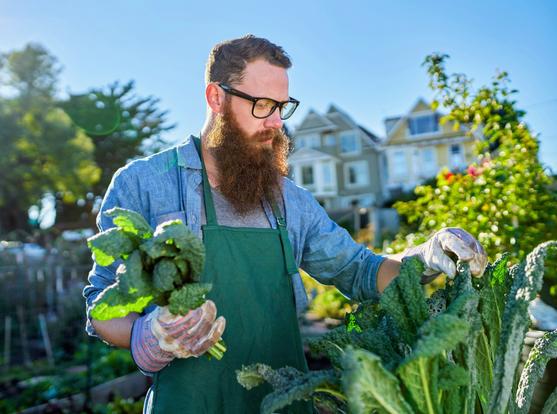#Poland - #UrbanGardens help cities fight #ClimateChange
By Andrei Ionescu
July 1, 2025
"Warsaw isn’t short on parks or tree-lined boulevards, but a trio of Polish universities wondered whether smaller, resident-run gardens could add something crucial to the capital’s climate resilience.
"To find out, researchers from SWPS University, Warsaw University of Technology, and the Warsaw University of Life Sciences mapped every vacant meadow, former orchard, and post-industrial lot within easy walking distance of apartment blocks.
"They came up with a staggering 1,864 hectares (4,600 acres) – more than enough space, they say, for a citywide network of community gardens that soak up stormwater, cool overheated streets, and capture carbon.
"The investigation combined that spatial analysis with more than 250 in-depth interviews. The goal was to see who is already gardening, what motivates them, and how much social capital – trust, shared norms, cooperative spirit – might be harvested alongside tomatoes and herbs.
Who uses the urban gardens
"It turns out the movement is surprisingly broad. Urban gardening brings together all social groups, the team reports, from school children planting pollinator patches to cultural institutions converting courtyards into micro-farms.
"Still, two cohorts dominate the regular volunteer lists: retirees – often women with higher education – and young middle class families.
"Most gardens revolve around a core group of 10 to 15 steady hands, supplemented by casual helpers and passers-by who stop to chat, water, or simply lounge among the raised beds.
Motivation of urban gardeners
"Why do they show up week after week? According to study co-author Piotr Majewski of SWPS University, the motivations of urban gardeners vary.
" 'The most important ones are: #reconnection to #nature, positive contribution to the #environment, social relations, and mutual learning between #gardeners,' said Majewski.
"Food, interestingly, is not the primary driver. Leaders said harvests help, but real value comes from #biodiversity, #composting, and public workshops on #sustainable living.
Tiny plots, big impact
"Those activities tally with an expanding body of international research linking urban agriculture to climate adaptation.
"Even pocket-size plots act as #CarbonSinks, trap particulate pollution, and soften the #UrbanHeatIsland. Raised beds can be engineered to hold back flash-flood water, while #compost heaps divert organic waste from #landfills.
"For #Warsaw, the numbers are compelling. Nearly all of the identified 1,864 hectares (4,600 acres) lie within a quarter mile of housing, meaning a potential garden is no farther than a ten-minute stroll for most residents – and often half that.
"Such proximity, the experts argue, makes it easier to harness gardens as a distributed #GreenInfrastructure network in a warming metropolis of nearly two million people.
"Yet the real strength may be social. Garden groups knit neighbors together, boosting the informal networks that cities rely on during #heatwaves, #floods, or other climate-related shocks.
"Many interviewees said they joined to cultivate community first, vegetables second. Regular workdays double as impromptu skill‐shares: retirees pass on horticultural know-how, children learn ecological stewardship, and newcomers forge local friendships.
#UrbanGardens in city plans
"Majewski and his colleagues believe Warsaw’s planners should take that social-ecological synergy seriously.
" 'The system of community gardens should also be considered as a tool to support climate change adaptation solutions in urban policies in spatial planning – provided that they are considered an important link in the urban green infrastructure system,' he explained.
"To get there, the researchers lay out a handful of recommendations. First, city hall could weave gardens into official zoning strategies rather than treating them as informal afterthoughts.
"That might mean leasing public land at peppercorn rents, streamlining permits, or integrating gardens into new housing estates from the design phase.
"Second, municipal agencies could supply starter kits – soil, timber, rain barrels – while leaving day-to-day management to residents. Third, wider publicity would help spread the idea beyond the usual eco-activist circles.
Scaling gardens citywide
"The study also flags areas for further research. At what point does a collection of isolated plots start delivering measurable cooling or flood mitigation benefits?
"How can Warsaw ensure that garden networks thrive in all districts, not just affluent ones with vocal community groups? And what responsibilities will fall on municipal departments when gardens become part of critical infrastructure rather than hobby spaces?
"Those unknowns aside, the evidence is clear: Warsaw already hosts a vibrant cohort of 'hero #activists' who coax life from overlooked corners.
"With modest institutional backing, their trowels and #CompostBins could double as #ClimateAdaptation tools – cooling concrete and absorbing rainfall.
"Perhaps most importantly, they help draw neighbors together in a city that will need every ounce of solidarity as temperatures rise."
https://www.earth.com/news/urban-gardens-help-cities-fight-climate-change/

